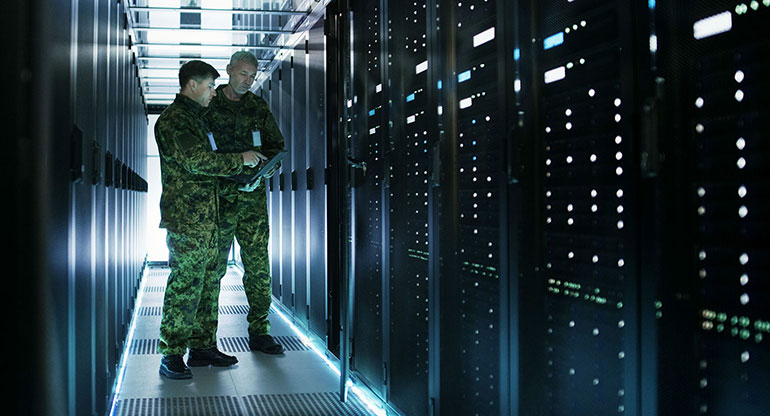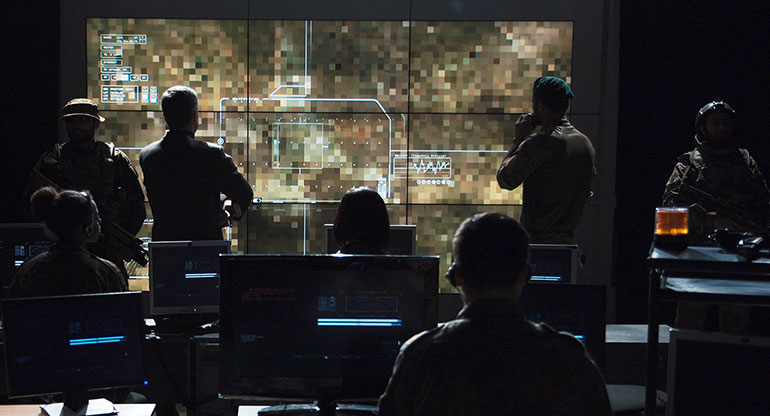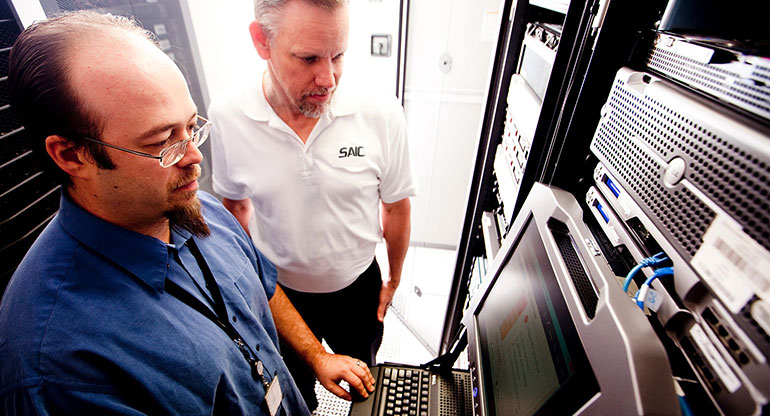Supercomputing technology at defense labs and test centers help produce military-wide results—fast
Processing a few megabytes of data can slow down your productivity; now imagine you are a Department of Defense (DoD) scientist or engineer trying to process petabytes.
From designing military aircraft, ships, and equipment to simulating human cell behavior, ocean, and weather patterns, our work on the High Performance Computing Modernization Program (HPCMP) for the U.S. Army, Navy and Air Force allows them to cut down processing time from days, weeks, or even months to hours.
SAIC’s support team on the HPCMP Integrated Technical Services program, or HITS, is working to enable communication between diverse platforms of supercomputing software and hardware across DoD operations and research efforts. This allows DoD scientists and engineers to remain competitively innovative in their ability to execute new projects quickly without adding additional staff or resources.
The HPCMP will collectively provide more than 233,000 compute cores, more than 890 terabytes of memory, and a total disk storage capacity of 43 petabytes over the life of the contract. To put that into perspective, a single supercomputer at a DoD Supercomputing Resource Center (DSRC) can process data at about two million times faster than the average laptop. Additionally, DoD supercomputing labs take up several thousand square-feet and have massive cooling facilities – enough to cool and power a small city.
Our support is helping the DoD to get their work done faster increasing national security. For example:
• At the Army Corps of Engineers, Engineer Research and Development Center in Mississippi, researchers are using supercomputing data to develop models and simulate weather patterns. Using advanced technology, researchers calculated flood impacts from Hurricane Harvey before the storm hit.
• At an Air Force Research Lab at Wright-Patterson in Ohio, scientists use trillions of computations per second to develop digital models that can replicate the high speeds and temperatures of wind tunnels in order to test aircraft engines.
• At an Army Research Lab at Aberdeen Proving Ground in Maryland, researchers and scientists use computational models to predict performance improvements on helicopter parts, like a CH-47F Chinook rotor blade.
• At the Naval Research Lab at Stennis Space Center in Mississippi, engineers combine air, ocean, and wave prediction systems to improve forecasting of tropical cyclones in order to create effective search and rescue, and mission planning.
Modernized supercomputers at work
Our teams perform functional duties like systems administration and program management support within the five DSRCs. The DSRCs form just one of three sub-programs under the HPCMP. Our work supports the efforts of 3,500 DoD engineers and scientists working to improve the readiness and capabilities of our armed forces and protect our national security.
We also support two supercomputing technology refreshes annually. These refreshes help to increase capacity and improve efficiencies at a DSRC through hardware updates, software license procurement, and other technology enhancements. Our teams have supported technology insertions at the individual centers to increase aggregate computational capabilities to users from 30 PetaFLOPS to nearly 50 PetaFLOPS.
Our ability to apply systems and program management expertise seamlessly across the DSRCs, regardless of location, enables our teams to increase efficiencies and reduce costs in support of this life-changing work. See more ways we are redefining what modernization looks like.
On 4/29/25, this document has been revised to comply with the EOs and all applicable federal, state, and local laws.



